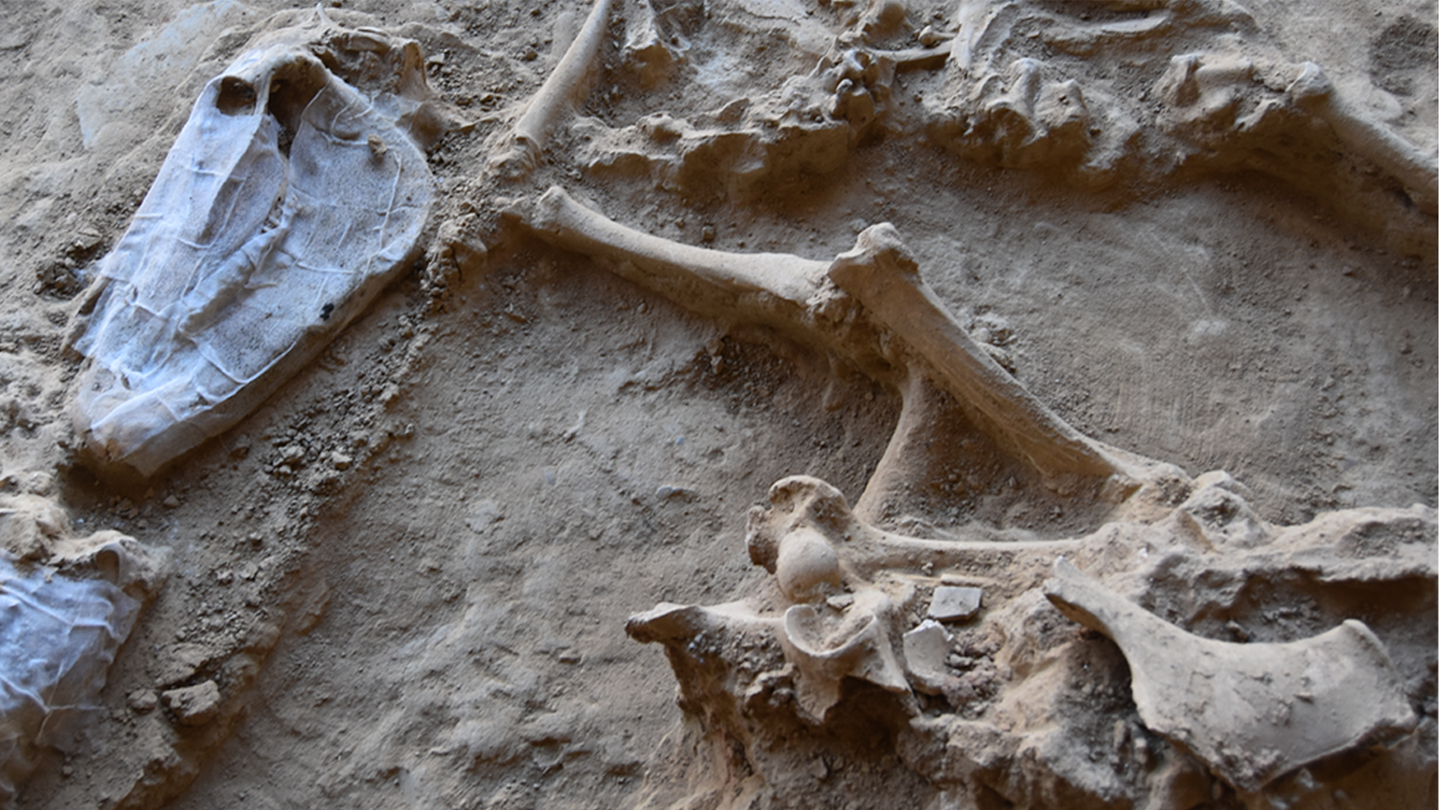Over 6,000 sacrificed animal bones tell a story of Iron Age Spain
Archaeologists found numerous horses in addition to pigs, cattle, and one dog at the Casas del Turuñuelo archaeological site.

Archaeologists have uncovered rare evidence of ritualized animal sacrifice at the Casas del Turuñuelo archaeological site in southwestern Spain. The site dates back to the 5th century BCE and offers a glimpse into the Tartessian culture of the Iberian Peninsula. The discovery is described in a study published November 22 in the open-access journal PLoS ONE.
[Related: Early humans carved old skeletal remains from burial caves into tools.]
The Tartessos were a historical civilization settled in the southern Iberian Peninsula from the 9th to 5th centuries BCE during the Iron Age. Archaeologists believed that their culture had a mixture of traits from local Iberian populations and Phoenicians arriving from countries in the eastern coast of the Mediterranean. It had a writing system called Tartessian, that had roughly 97 inscriptions in a Tartessian language.
In the western Mediterranean region where the Tartessos lived, archaeological evidence of animal sacrifice is difficult to come by. However, written sources including Homer’s The Odyssey chronicle animal sacrifice in the Mediterranean at this time. The gap between the written record and archaeological evidence has made it difficult for archaeologists to establish a clear understanding of what protocols and patterns were behind the practice here.
Mª Pilar Iborra Eres, a study co-author and archaeologist Spain’s Instituto Valenciano de Conservación, Restauración e Investigación, tells PopSci that the Casas del Turuñuelo site is special due to the “excellent conservation of the building and its contents. In this case, the accumulation of bone remains that testify to ritual activities.”
In this new study, Eres and her team studied an example of animal sacrifice from an Iron Age building that dates back towards the end of the 5th Century BCE. The excavation began in 2015 and they examined and dated 6,770 bones that belonged to 52 animals. The animals were predominantly adult horses, but also included cattle, pigs, and one dog. The remains show signs of intentional burial, which is one clue that they were sacrificed.
They found that the animals had been buried in three sequential phases. In the first two phases, the skeletons were found to be mostly complete and unaltered. In the third phase, all of the skeletons except the horses show signs of having been processed for food. This suggests that a meal likely accompanied this ritual.
A case study like this one allowed the team to establish some key details about ritual protocols at Casas del Turuñuelo in order to determine what was behind them. The bones indicate that adult animals were selected for sacrifice rather than young. The presence of burned plant and animal remains also shows that fires played a role in these rituals.
[Related: Pompeii’s archaeological puzzles can be solved with a little help from chemistry.]
Casas del Turuñuelo also shows some unique features compared to other Mediterranean sites, including the large number of sacrificed horses.
“The equine remains were discovered as a result of a methodical excavation of one of the areas of this building, the courtyard,” says Eres. “This is where animal sacrifices were made during the use of the building by Iron Age societies.
The space was also likely used repeatedly over several years for a variety of sacrificial rituals.
The team was surprised that they were able to verify that the deposit here was so perfectly preserved and portrayed what they believe to be an accurate picture of the rituals that took place there. They hope to complete this study by applying new methods to study the samples.
“Archaeology allows us to learn about many aspects of the life of past societies,” says Eres. “By applying innovative methodologies such as computed tomography, paleoparasitology, isotope analysis for the study of diet and mobility or ancient DNA, the aim is to carry out a complete study of this group of equids.”